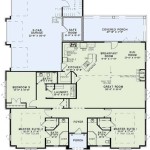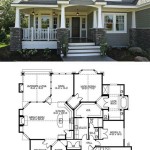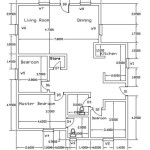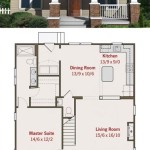Finding Building Plans For My House
Locating the building plans for an existing house can be a valuable endeavor. These plans, often referred to as blueprints or architectural drawings, provide a detailed representation of the house's construction, layout, and structural components. Having access to these documents can be beneficial for various reasons, ranging from planning renovations to resolving property disputes. This article explores several avenues for finding building plans, outlining the potential sources and the procedures involved.
Local Government Agencies
One of the primary repositories for building plans is the local government agency responsible for building permits and inspections. This agency is typically a department within the city or county government and may be called the Building Department, Planning and Zoning Department, or a similar designation. When a house is constructed, the builder or homeowner is usually required to submit building plans to this agency as part of the permitting process. These plans are then reviewed to ensure compliance with local building codes and regulations.
To access building plans from the local government agency, it is generally necessary to contact the department directly. This can be done via phone, email, or in person. The specific procedures for requesting access to records may vary depending on the jurisdiction. Some agencies may require a written request outlining the information needed, while others may have online portals for submitting requests.
When making a request, it is crucial to provide as much identifying information as possible about the property. This includes the street address, lot number, and any other relevant details that can help the agency locate the correct records. The agency may also require proof of ownership or legal authorization to access the plans. This could include a copy of the property deed, a power of attorney, or other legal documentation.
It is important to note that not all building plans are retained indefinitely by government agencies. Some agencies may have policies regarding the length of time that records are kept, and older plans may have been archived or destroyed. Additionally, the availability of plans may depend on the age of the house and the local regulations in effect at the time of construction. Older houses may predate the requirement for submitting detailed building plans, or the plans may have been lost or damaged over time.
Furthermore, accessing building plans from a government agency may involve fees. These fees can vary depending on the complexity of the request, the number of documents involved, and the agency's policies. Some agencies may charge a per-page fee for copies of the plans, while others may have a flat fee for searching and retrieving records.
The House Builder or Developer
Another potential source for building plans is the original builder or developer of the house. If the house was built within the last few decades, there is a reasonable chance that the builder or developer still has copies of the plans on file. This is particularly likely if the builder or developer is still in business and operates in the local area.
To locate the builder or developer, it may be necessary to conduct some research. This can involve searching online directories, checking with local real estate agents, or contacting the local Home Builders Association. It is also possible that the previous owner of the house may have information about the builder or developer.
Once the builder or developer has been located, it is advisable to contact them directly and inquire about the availability of building plans. When making the request, it is important to provide as much information as possible about the house, including the address, construction date, and any other relevant details. The builder or developer may have a specific process for handling requests for building plans and may require proof of ownership or legal authorization.
If the builder or developer is able to locate the plans, they may be willing to provide copies to the homeowner. However, it is important to note that the builder or developer is not legally obligated to provide these plans, and they may charge a fee for their services. The fee could cover the cost of retrieving the plans, making copies, and any administrative expenses involved.
In some cases, the original builder or developer may no longer be in business or may have relocated. In such instances, it may be difficult or impossible to obtain building plans from this source. However, it is still worth exploring this option, as it can potentially save time and effort compared to other methods.
Previous Homeowners and Real Estate Records
Previous homeowners may possess copies of the building plans. Upon selling the property, some homeowners might include plans as part of the documentation handed over to the new owners. Contacting previous owners can be facilitated through real estate agents involved in past transactions or by researching property records maintained by the county.
County Recorder's offices often hold records of property transactions, including deeds and potentially surveys or plats that might contain building information. While full architectural plans are not always included, surveys can provide valuable insights into property lines, easements, and the placement of structures on the land. These documents can be accessed by the public, usually for a fee.
When researching real estate records, it's essential to be patient and persistent. Older records might not be digitized, requiring physical searches at the recorder's office. Staff at the office can assist in navigating the record system and identifying relevant documents.
Architects and Engineering Firms
If the house was designed by an architect or engineered by a specific firm, these professionals are other potential sources for building plans. Architects often maintain archives of their projects, even decades after completion. Engineering firms involved in structural or mechanical aspects of the house may also retain relevant drawings and specifications.
Identifying the architect or engineering firm can be challenging if this information isn't readily available. Examining construction permits from local government agencies, as mentioned earlier, might reveal the names of the professionals involved. Local architectural societies or engineering associations can also provide directories of firms operating in the area.
Contacting these professionals requires a similar approach to contacting builders or developers. Providing the property address, construction date, and any other relevant details will aid them in locating the specific project records. Similar to builders, architects and engineers may have policies regarding the release of plans, including fees and requirements for proof of ownership.
Online Resources and Third-Party Services
The internet provides a variety of resources that might assist in locating building plans. Some websites specialize in providing access to historical building permits or property records. These services often charge a fee for their search and retrieval services, but they can potentially save time and effort compared to manual searches at government agencies.
However, it's crucial to exercise caution when using online resources. Ensure that the website is reputable and trustworthy before providing any personal or financial information. Verify the accuracy of the information provided by the website, as errors can occur in online databases.
Furthermore, some companies offer professional building plan retrieval services. These companies specialize in researching and obtaining building plans from various sources, including government agencies, builders, and architects. They typically charge a fee for their services, which can vary depending on the complexity of the search and the availability of the plans.
Creating New Plans
In situations where existing building plans cannot be located through any of the aforementioned methods, it may be necessary to create new plans. This involves hiring a qualified architect or designer to survey the house and create a detailed set of drawings. This process can be more expensive and time-consuming than locating existing plans, but it provides the opportunity to create accurate and up-to-date documentation of the house's construction.
When hiring an architect or designer, it is important to choose someone with experience in residential design and a thorough understanding of local building codes and regulations. The architect or designer will typically conduct a site visit to measure the house and document its existing conditions. They will then create a set of drawings that depict the house's layout, dimensions, structural details, and other relevant information.
The cost of creating new building plans can vary depending on the size and complexity of the house, the level of detail required, and the architect's or designer's fees. It is advisable to obtain quotes from several different professionals before making a decision. It is also important to discuss the scope of work and the deliverables in detail to ensure that the plans meet the homeowner's specific needs.
Key Considerations
Several factors can influence the success of finding building plans. The age of the house, the location of the property, and the local regulations in effect at the time of construction all play a role in determining the availability of plans. Older houses may predate the requirement for submitting detailed building plans, while newer houses are more likely to have complete documentation on file.
The homeowner's reasons for needing the building plans can also affect the approach taken. If the plans are needed for a simple renovation project, a basic set of drawings may suffice. However, if the plans are needed for a more extensive renovation or for legal purposes, a more detailed and comprehensive set of drawings may be required.
Persistence and patience are essential throughout the search process. Locating building plans can be a challenging and time-consuming task, particularly for older houses or houses located in areas with poor record-keeping practices. It is important to be prepared to explore multiple avenues and to be persistent in following up with potential sources.

Archimple Finding Building Plans And Floor For Your House Tips Resources

Design Your Own House Floor Plans Roomsketcher

How To Find Floor Plans Blue Prints Of Your House

Design Your Own House Floor Plans Roomsketcher

How To Get Blueprints Of Your House

Design Your Own House Floor Plans Roomsketcher

How To Read A Floor Plan With Dimensions Houseplans Blog Com

Floor Plans Learn How To Design And Plan

How To Read A Floor Plan With Dimensions Houseplans Blog Com

Design Your Own House Floor Plans Roomsketcher
Related Posts








